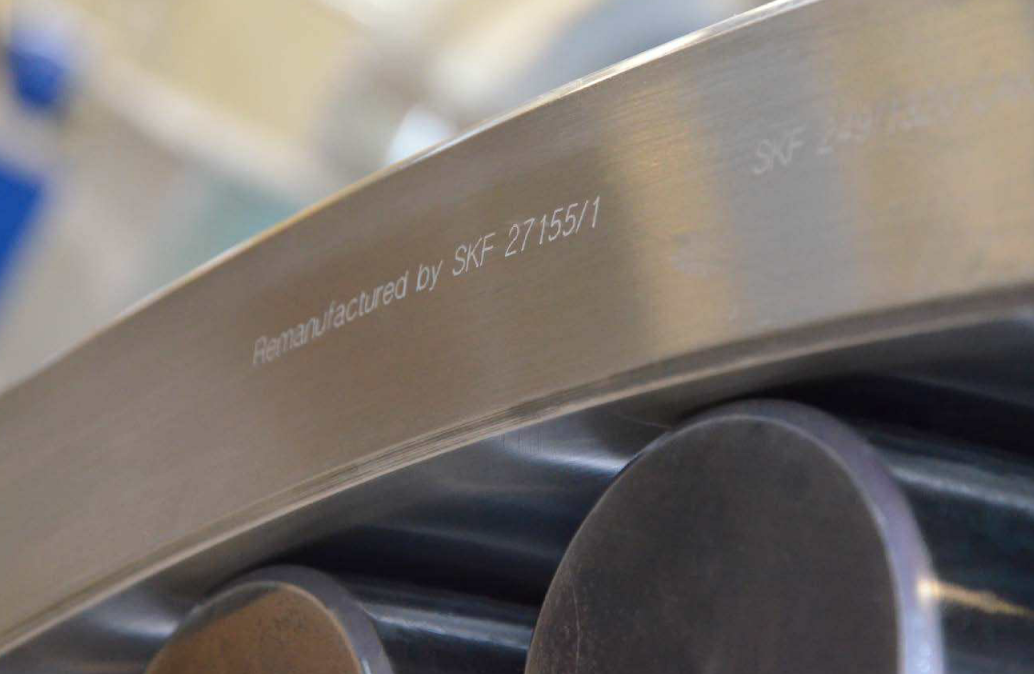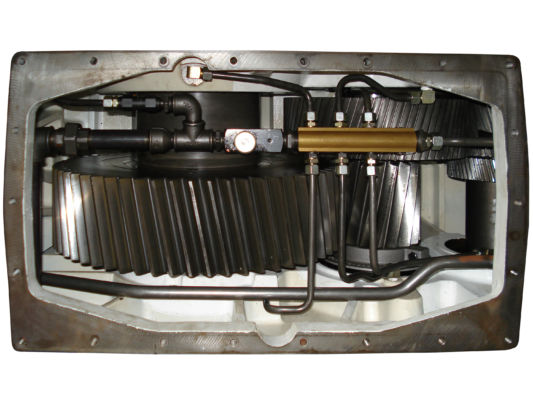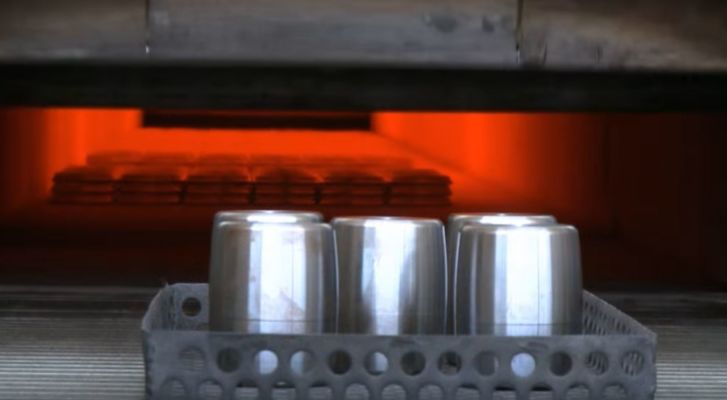When operational bearings become damaged and are no longer effective, they can be remanufactured. They are taken apart and assessed to determine their condition. The assessment is based on standards set by the remanufacturer and vary from company to company. Some parts are too damaged and cannot be restored, but the majority can. The aim is to repair the bearing so that it is at the same standard as its original condition.
How are bearings remanufactured?
The treatment required depends on the condition of the component. For minor wear, such as discoloration or micropitting, polishing to remove these small surface imperfections is enough to restore it. If there are large indentations, signifying a higher level of damage, grinding is normally required to bring the bearing back to its original state
Remanufacturing bearings isn’t a new phenomenon. In fact, this practice has been commonplace in the rail industry for decades. However, this is not so established in wind energy and is often only used in emergency cases where waiting for a new part isn’t viable. So, what are the benefits of remanufacturing bearings and why is wind energy lagging behind?
What’s the state of play in the wind energy sector?
While machinery in wind turbines, such as gearboxes and generators have been restored for many years, bearings usually are not. Many operators are somewhat cautious about remanufacturing vital bearings due to fears of unreliability. This isn’t the case though, highlighted by the fact that remanufactured bearings are used in airplane jet engines where there is no room for error. Now many wind energy organizations see remanufacturing as a lucrative option and a strategic approach to maintenance.
The benefits of remanufacturing bearings are clear
Reducing operational costs is the clearest benefit of repairing bearings rather than replacing them. Buying a new part is in many cases significantly more expensive than the remanufacturing process. But it isn’t just the cost benefit that makes this practice so favorable. Remanufacturing is often considerably quicker than the lead times on key components, reducing potential periods of downtime. In emergency cases, a bearing can be remanufactured in a matter of hours. Additionally, the environmental impact of repairing a component is much lower compared to creating a new one. All of these factors contribute to operators reducing operational costs and improving the levelized cost of energy (LCOE).
It takes approximately 100 processes to create a new bearing, but only around ten to remanufacture one.
A straight-forward solution
Despite not being established as the standard in wind energy, there are actually very few disadvantages to bearing remanufacturing. If the right standards are in place for analysis and the process itself is performed by skilled staff, repairing bearings is somewhat straightforward. Remanufacturing extends the service life of a bearing and is usually done twice but depending on the condition of the bearings can be done multiple times.
Remanufacturing uses up to 90% less energy than manufacturing a new bearing.
Will bearing remanufacturing become established in wind energy?
More and more organizations are now opting to remanufacture wind turbine bearings and view it as a strategic part of maintenance. This enables companies to reduce operational expenditure and boost uptime. Remanufacturing bearings will likely become the standard in wind energy in the years to come, contributing to optimizing the levelized cost of energy for wind energy companies.



